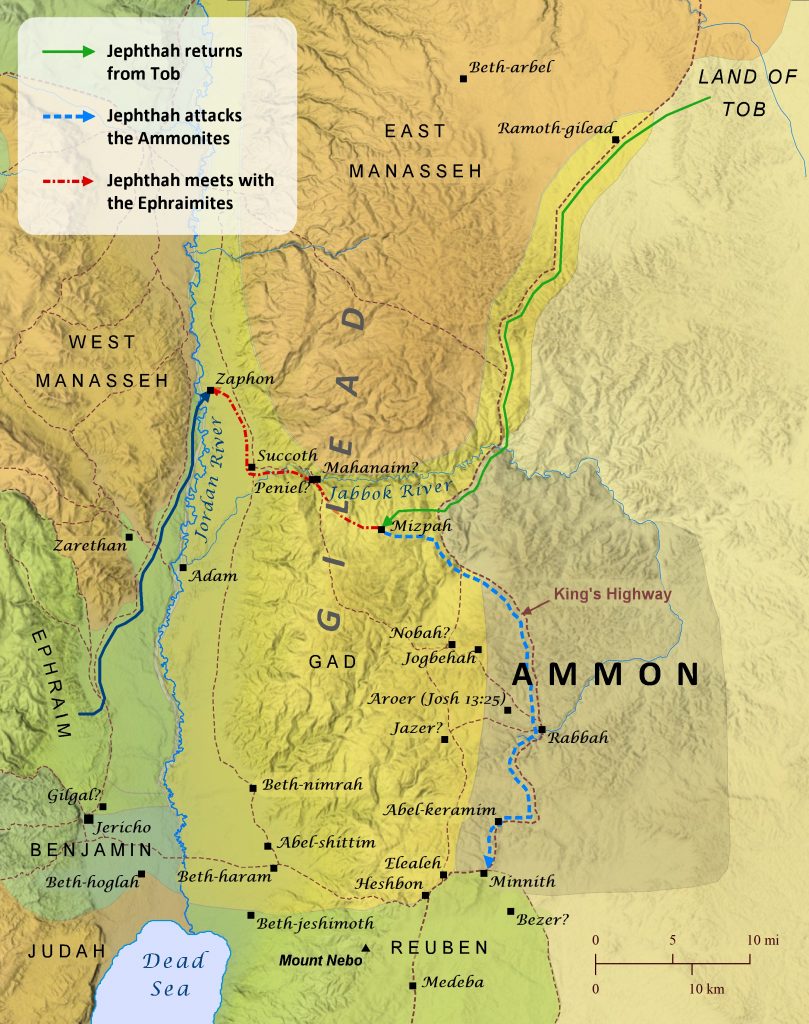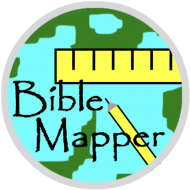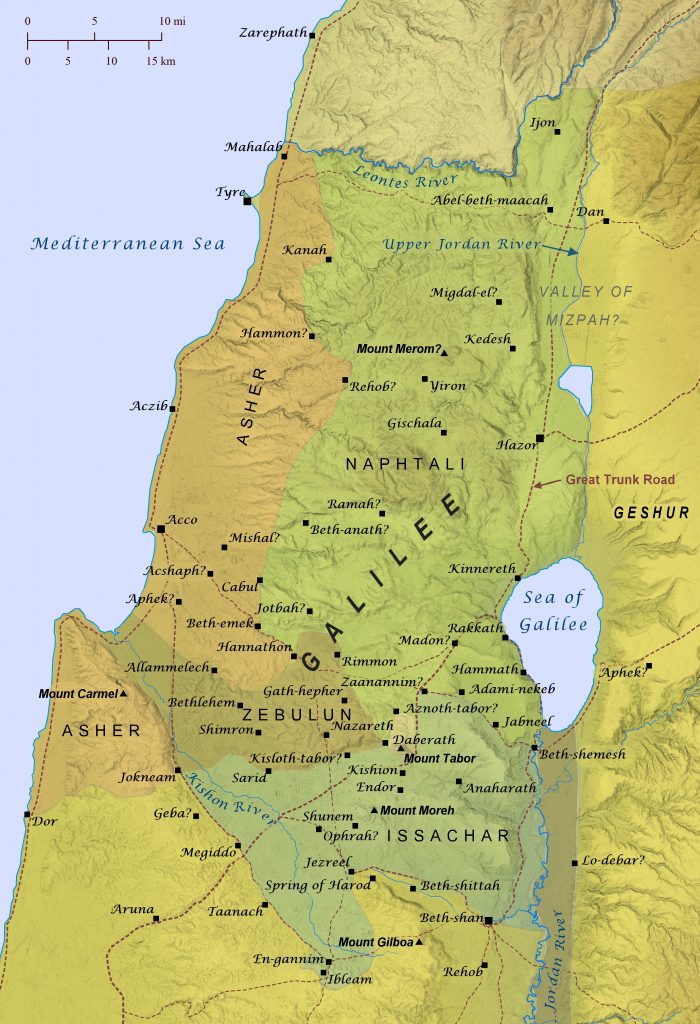Judges 10-12
The story of Jephthah is set in the time of the judges, when Israel was settling into the land they had taken possession of many years early under Joshua’s leadership. Continuing their repeated pattern of sin, oppression, repentance, and deliverance, the people of Israel were suffering attacks by the Ammonites, who normally occupied the eastern edge of habitable land east of the Jordan River. The region of Gilead and the tribes of Judah, Benjamin, and Ephraim were the primary targets of these attacks (Judges 10:6-10), and the Israelites cried out to the Lord for help. Jephthah had been born to a prostitute in Gilead and was driven away to the land of Tob by his brothers, but the elders of Gilead sent for him to come and lead them to fight against the Ammonites. When Jephthah returned, he sent a message to the king of Ammon asking him why he was attacking Israel. The king of Ammon answered that the land east of the Jordan River taken under Joshua’s leadership actually belonged to the Ammonites, but Jephthah replied that this land had not belonged to Ammon but to Sihon king of the Amorites, who attacked the Israelites while they were approaching the plains of Moab. The king of Ammon ignored Jephthah’s response, so Jephthah attacked the Ammonites and defeated them, devastating twenty of their towns in the process. During the battle, Jephthah made a tragic vow to sacrifice whatever came out of his house to greet him upon his victorious return. When the Ephraimites heard of Jephthah’s war with Ammon, they were angry him and met with him at Zaphon to ask why he never asked them to join him in battle. Jephthah insisted that he had invited them, but they did not come. Then Jephthah’s men fought against the Ephraimites and defeated them, capturing the fords of the Jordan River (shallow crossing points) and killing any Ephraimites who tried to cross back over to Ephraim. Apparently the Gileadites could identify these Ephraimites by their inability to pronounce the sound sh, which the Gileadites could pronounce.





